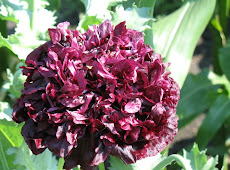Here are some tips to increase the production and quality of tomatoes and cucumbers
1. When you dig the hole where you intend to transplant the tomato, mix Talk of Tomatoes in the soil. This is a name of a calcium based material that prevents blossom end rot. There are others that accomplish the same thing. Some people even use crushed egg shells.
Blossom end rot occurs because of inconsistent watering, which we cannot sometimes prevent since we can’t control the rain. It appears as a dark brown spot on the bottom of the fruit. The spot grows and rots.
2. After you transplant your tomatoes and have firmed down the soil put in two tomato spikes per plant. These are fertilizer and they have several names like spikes, boosters or boomers, and are made by several companies. You can even get organic ones now. The important thing is to get ones with these numbers: 8 – 24 – 8. This means the Nitrogen is at 8, the Phosphorous (good for roots and blooms) is at 24, and the Potash is at 8.
3. Both tomatoes and cucumbers produce better when they are near something red. No, I’m not kidding. The effectiveness of red plastic mulch has been researched by several university agriculture departments and has proven to increase yields by 20%. Several seed catalogue companies sell red plastic mulch, so price check before you purchase.
And yes, I know it’s plastic, but it is reusable. I have a four-year old strip with holes cut in it that I use for the cucumbers—I plant the cucumbers in soil through the holes—and 4 to 2 year-old strips I run between the rows of tomatoes. I’ve cut a few slices in these so the water and rain can drain away.
Red plastic mulch has an added benefit for tomatoes: it helps prevent blight. Blight is a naturally occurring disease that exists in the soil and it is triggered when the soil is too wet. Since we can’t control rain, fog or heavy dew, we can’t control how wet the soil around tomatoes can become, but this plastic mulch helps us do that.
Blight in this case means the leaves first get brown spots, then become all brown and withered. Not a pretty sight, but more importantly, no leaves means no photosynthesis and that means dead plants.
Have a great time playing in the dirt.
Poppy
Subscribe to:
Post Comments (Atom)


Wow its a very good post. The information provided by you is really very good and helpful for me. Keep sharing good information..
ReplyDeleteGarden Centre Cranbrook